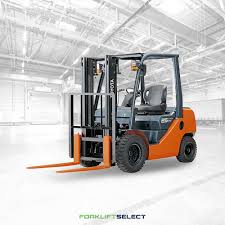In the modern construction and demolition industries, the demand for high-performance tools capable of handling tough materials efficiently continues to grow. Among these, hydraulic hammers have become an indispensable piece of equipment, offering unmatched power, precision, and versatility. Designed to break through concrete, rock, and other hard surfaces, hydraulic hammers are used in a variety of applications such as road construction, mining, quarrying, and demolition. Their ability to deliver consistent impact energy with controlled force makes them a preferred choice for contractors seeking productivity and reliability in challenging environments.
Understanding
A hydraulic hammers is a powerful percussion device typically attached to an excavator, skid steer, or backhoe loader. It operates using hydraulic fluid supplied by the carrier machine to generate forceful blows through a piston-driven mechanism. These repeated impacts break down large rocks, reinforced concrete, or other solid materials efficiently. Unlike pneumatic hammers that rely on compressed air, hydraulic systems offer greater power, precision, and energy efficiency, making them ideal for heavy-duty applications.
Working Mechanism of Hydraulic Hammers
Hydraulic hammers function through the conversion of hydraulic energy into mechanical force. The system consists of a hydraulic cylinder, piston, control valve, and tool (known as the chisel or moil point). The process starts when pressurized hydraulic fluid enters the hammer’s chamber. This pressure drives the piston downward, striking the tool, which in turn impacts the target material. The hydraulic circuit then resets the piston to its initial position, and the cycle repeats rapidly often several hundred blows per minute. This high-impact action delivers consistent power to break through even the most resistant materials. The efficiency of this process depends on factors such as hydraulic flow rate, operating pressure, and hammer size relative to the carrier machine.
Types of Hydraulic Hammers
Hydraulic hammers are available in various types and sizes, each designed for specific applications and carrier compatibility.
1. Small Hydraulic Hammers: These lightweight models are used with mini excavators and skid steers for tasks like concrete demolition, trenching, or light excavation. They offer precise control in confined spaces.
2. Medium Hydraulic Hammers: Suited for general construction, roadwork, and medium rock breaking, these are the most commonly used hammers due to their balance of power and versatility.
3. Large Hydraulic Hammers: These heavy-duty models are designed for mining, quarrying, and large-scale demolition. They deliver massive impact energy capable of breaking through solid rock formations or large concrete structures.
4. Underwater Hydraulic Hammers: Built with special sealing and cooling systems, these are used for underwater construction, pile driving, and marine engineering projects.
Key Components and Design Features
The design of a hydraulic hammer emphasizes durability, efficiency, and precision.
1. Piston: The core component responsible for delivering impact energy to the chisel. It must withstand repeated high-pressure cycles.
2. Tool (Chisel/Moil): The interchangeable working tip that makes direct contact with the material being broken. Different tool shapes are used depending on the task, such as pointed for rock breaking or flat for concrete slabs.
3. Accumulator: Stores hydraulic energy to ensure consistent impact power and smooth operation.
4. Housing: Provides protection for internal components and absorbs vibration to reduce wear and operator fatigue.
5. Hydraulic Valves: Control fluid flow and pressure within the hammer to optimize performance and prevent overloads.
6. Mounting Bracket: Allows secure attachment to the carrier machine and ensures proper alignment during operation.
Advantages of Using Hydraulic Hammers
Hydraulic hammers offer numerous benefits that enhance both efficiency and profitability on job sites.
1. High Efficiency: They deliver strong and consistent impact energy, allowing for faster material breakdown compared to manual or mechanical methods.
2. Versatility: Suitable for a wide range of applications—from demolition to quarrying and even underwater construction.
3. Reduced Operating Costs: Fewer moving parts and less maintenance compared to traditional impact tools contribute to lower overall costs.
4. Operator Comfort: Modern hammers are designed with noise and vibration reduction technologies, minimizing fatigue and improving safety.
5. Durability: Built with high-strength materials and advanced engineering, hydraulic hammers can withstand extreme conditions and long operating hours.
Applications in Construction and Industry
Hydraulic hammers have a broad range of applications across industries.
1. Construction and Demolition: Commonly used for breaking concrete structures, old pavements, and foundations. Their precision allows selective demolition without damaging nearby structures.
2. Mining and Quarrying: Essential for breaking oversized rocks, secondary rock reduction, and freeing trapped materials in crushers.
3. Roadwork: Used to remove asphalt and reinforced concrete during road repair and reconstruction.
4. Trenching and Excavation: Effective in breaking hard ground layers or rock to create trenches for pipelines or cables.
5. Pile Driving: Adapted for driving steel or concrete piles in foundation work, particularly when combined with custom attachments.
6. Underwater Engineering: Specialized versions are used for marine construction, underwater demolition, and offshore projects.
Factors Affecting Performance
Several factors influence the efficiency and lifespan of hydraulic hammers.
Hydraulic Flow and Pressure: Matching the hammer’s specifications to the carrier’s hydraulic system ensures optimal performance. Insufficient flow results in weak impact, while excessive pressure may cause damage.
Tool Selection: Using the correct tool shape for the application enhances performance and prevents premature wear.
Carrier Compatibility: The excavator or machine’s size and weight should correspond to the hammer’s capacity for safe and efficient operation.
Maintenance Practices: Regular inspection of seals, hoses, and accumulators prevents downtime and extends service life.
Operator Skill: Proper handling and positioning minimize wear and improve accuracy during operation.
Maintenance and Best Practices
Routine maintenance is crucial for maximizing the performance of hydraulic hammers.
1. Daily Inspections: Check for leaks, cracks, or unusual noises before use.
2. Lubrication: Apply proper grease to the tool bushing and chisel to prevent friction and overheating.
3. Hydraulic Oil Quality: Ensure clean, high-quality hydraulic oil is used to avoid internal contamination.
4. Storage: Store hammers in a clean, dry environment when not in use, with protective caps on hydraulic ports.
5. Scheduled Servicing: Replace seals, accumulators, and wear components according to manufacturer guidelines.
Environmental and Safety Considerations
Modern construction demands equipment that minimizes environmental impact and enhances workplace safety. Hydraulic hammers have evolved to meet these standards.
Noise Reduction: Advanced dampening systems reduce noise levels, making them suitable for urban projects.
Vibration Control: Enhanced mounting systems limit vibrations transmitted to the operator and carrier machine.
Dust Control: Optional attachments such as water sprays help minimize dust generation during operation.
Safety Measures: Operators should wear proper PPE and follow safety protocols to prevent accidents from flying debris or equipment malfunction.
Technological Innovations in Hydraulic Hammers
Recent innovations have improved the performance, monitoring, and efficiency of hydraulic hammers. Digital control systems now allow operators to adjust impact frequency and energy levels in real time. Sensors monitor temperature, pressure, and cycle counts, enabling predictive maintenance and reducing downtime. Some manufacturers are integrating eco-friendly hydraulic systems to lower emissions and oil consumption, aligning with sustainable construction practices.
Comparison with Pneumatic and Mechanical Hammers
Compared to pneumatic or mechanical alternatives, hydraulic hammers deliver superior power density and energy transfer efficiency. Pneumatic hammers require external compressors, making them less mobile and energy-intensive. Mechanical hammers, while cost-effective, lack the precision and consistent power output of hydraulic systems. Hydraulic hammers strike a balance between raw power, efficiency, and operational control.
Conclusion
The hydraulic hammer stands as a cornerstone of modern construction and demolition technology, providing unparalleled strength, precision, and efficiency. Its adaptability across diverse applications from urban demolition to mining and marine work demonstrates its importance in today’s industrial landscape. As technology advances, hydraulic hammers continue to evolve, offering smarter control systems, improved durability, and environmentally friendly designs. For contractors and engineers alike, these machines remain a vital investment, ensuring that even the toughest materials can be broken down with speed, accuracy, and minimal environmental impact.
















